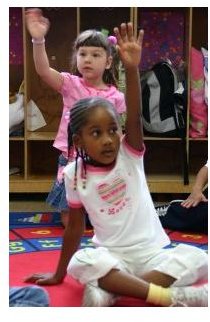How to Teach An Autistic Child to Raise His Hand In Class
Being Patient
A student with autism has many challenges in the classroom, whether from sensory overload or the social conventions of things. When the child is overwhelmed or in need of something, he or she may not know the right way to get a teacher’s attention.
Such children may just stand up from their desks or interrupt in the middle of class. Some kids might throw a tantrum. This isn’t the kid’s fault because they just have not learned the social conventions of a classroom.
In a classroom with more than 20 kids in it, things can be hectic. Oftentimes it is difficult for a teacher to tell whether a child needs help with something or has a question. Since children with autism have a lot of trouble with social skills and social rules, the concept of raising their hands to get their teacher’s attention might not even cross their minds, even if they see their peers doing this with success. Teaching children with autism requires a lot of patience and dedication as this kind of teaching is very different from teaching children with no disabilities or with other developmental delays.
Once a child with autism learns something, they may appear to understand it, but then the next day, they may have forgotten it. This can be very frustrating to teachers and parents. It all comes down to two words: Patience. Patience. Take this piece of advice to heart; you will need it when trying to teach students with autism to raise their hands.
Setting Clear Expectations
The first and most important step is to make your expectations clear. You can’t assume a student with autism will understand to raise his or her hand just because other children in the classroom raise their hands to be called upon.
Sit down with the student and explain to him that in order to be assisted, he needs to raise his hand. Explain to him how by raising his hand he can get what he needs without causing a disruption or distracting the other students.
Once the child with autism understands what is expected of him, things will go a lot smoother. You may need to remind the child more than once about the hand-raising rule. Using visual clues can greatly help a student with autism. Create a small note that can be tapped to the student’s desk, which reminds the student about raising his or her hand to be called on, to help the child to remember during busy classroom times.
Social Stories
Do you want to know the best way to learn how to teach autistic children to raise their hand? Use social stories as a resource. Social stories are a great way to teach autistic children about many different concepts and skills like raising their hand to get an adult’s attention. A social story is a story for students with autism that explains what to do in a specific situation and why it is important for the student to respond that way.
Social stories are amazingly affective and cover thousands of topics and situations. Most social stories are free; a quick search using Google will lead you to thousands of social stories.
Other students can also be used as “tools” to help the child with autism remember to raise their hands. A friendly reminder from another child can help autistic children more than a teacher in some cases. However, make sure that the autistic student’s classmates are not being mean or making fun of the child when they give him or her a reminder. Children with autism have enough things on their plate without adding bullying to the mix.
The best way for a child with autism to learn from a social story is by having the child watch an online social story. Seeing the character in action during a situation can help a child understand more than by reading about a situation.
The majority of children with autism learn by seeing something instead of hearing or reading about it. Another great way to help teach these kids is by using positive reinforcement. Positive reinforcement can be in the form of verbal praise, a small piece of the child’s favorite food or dessert, or small period of playtime with the child’s favorite toy. Applied Behavioral Analysis (ABA) uses this method of positive reinforcement in many of its treatments.
Though teaching a child with autism to raise his or her hand can be a very challenging task, it can be accomplished with positive reinforcement, Though at the time it may seem like it won’t be worth it, or that it isn’t worth it in the long run, this will have a hugely positive impact on the child’s school performance and help them succeed inside and outside of the classroom.
References
- The writer has Aspergers and also works with students with Autism/Aspergers who are enrolled in Special Education
- SXC: Stock photo: Who’s turn is it? 94 by anissat under royalty free license
